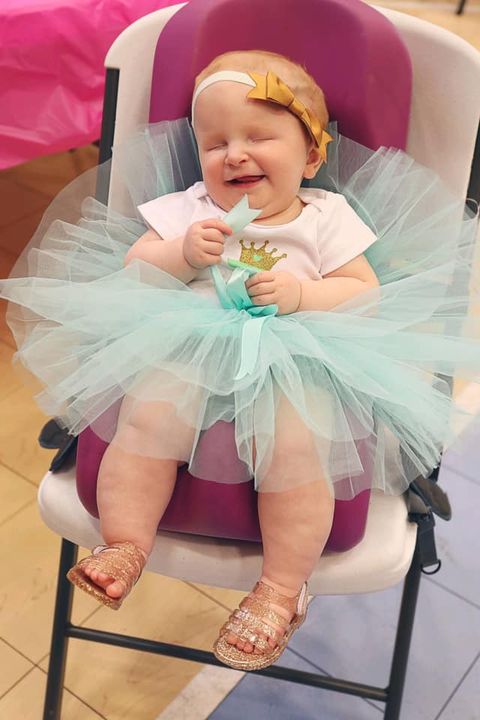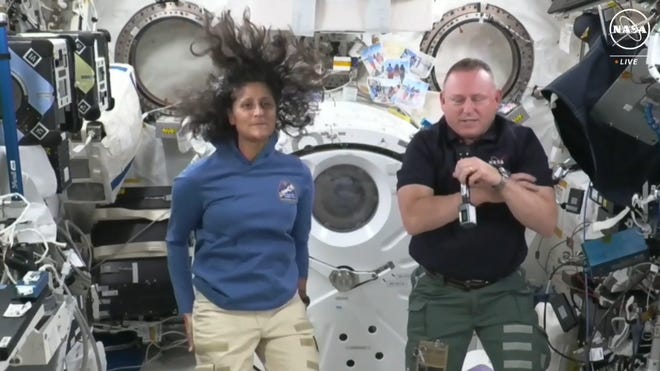Bilateral Anophthalmia: Challenges And Hope For Families

Table of Contents
Understanding Bilateral Anophthalmia and its Causes
What is Bilateral Anophthalmia?
Bilateral anophthalmia refers to the absence of both eyes at birth. It's crucial to differentiate this from other conditions like microphthalmia, where the eyes are present but abnormally small. During fetal development, the eyes begin to form very early in pregnancy. Bilateral anophthalmia occurs when this complex developmental process is disrupted, preventing the proper formation of the eyes. The exact causes are often unknown, but research suggests a combination of genetic factors and environmental influences may play a role.
- Genetic Factors: Several genes have been linked to an increased risk of anophthalmia, though these are often complex and interact in ways that aren't fully understood. Genetic testing may be considered in some cases.
- Environmental Influences: Exposure to certain teratogens (substances that can cause birth defects) during pregnancy, such as some medications or infections, might contribute to the development of bilateral anophthalmia.
Diagnosis and Early Intervention
Early diagnosis is crucial for families coping with bilateral anophthalmia. This often occurs through prenatal ultrasound scans during pregnancy, allowing parents to prepare emotionally and practically for their child's needs. After birth, a thorough ophthalmological examination confirms the diagnosis.
- Prenatal Diagnosis: Ultrasound imaging can detect the absence of eyes or significant abnormalities in eye development, often during the second trimester.
- Postnatal Diagnosis: A comprehensive ophthalmological assessment by a specialist confirms the diagnosis and rules out other conditions.
- Early Intervention: Early intervention is critical for appropriate care planning, including access to assistive technologies, psychological support, and educational resources. This early support significantly impacts the child's development and the family's coping mechanisms.
Challenges Faced by Families with Children with Bilateral Anophthalmia
Emotional and Psychological Impact
The diagnosis of bilateral anophthalmia can have a profound emotional impact on parents. Grief, anxiety, and feelings of helplessness are common. The adjustment process is unique to each family, but the importance of early access to psychological support cannot be overstated.
- Parental Grief: The loss of the expected visual development can be deeply saddening for parents, requiring time and support to process.
- Impact on Siblings: Siblings may experience a range of emotions, from confusion and concern to jealousy or resentment. Family therapy can help siblings adjust and understand their brother or sister’s needs.
- Long-Term Mental Health: Addressing the child's emotional and psychological well-being is vital throughout their life. Specialized therapies can help them develop self-esteem and coping mechanisms.
- Professional Support: Counseling, support groups, and family therapy offer invaluable assistance in navigating the emotional challenges of raising a child with bilateral anophthalmia.
Practical Challenges and Needs
Beyond the emotional challenges, families face significant practical obstacles. These require careful planning and access to specialized resources.
- Specialized Care: Regular ophthalmological check-ups are essential, even in the absence of eyes, to monitor for associated conditions. Fitting and maintenance of prosthetic eyes also require specialized care.
- Home Modifications: Adapting the home environment to ensure safety and accessibility is critical. This might involve removing tripping hazards, installing grab bars, and providing tactile cues.
- Assistive Technology: Assistive technologies play a vital role in enabling independence. This can include specialized mobility aids, sensory substitution devices (e.g., echolocation training), and adaptive learning tools.
- Education: Ensuring access to appropriate education is paramount. This may involve mainstream schooling with support services or specialized educational settings catering to visually impaired children.
- Financial Implications: The ongoing medical care, assistive devices, and therapies associated with bilateral anophthalmia can create significant financial strain for families.
Hope and Support for Families with Bilateral Anophthalmia
Assistive Technologies and Interventions
Despite the challenges, significant advancements in assistive technologies offer hope and improved quality of life.
- Advanced Prosthetics: Modern prosthetic eyes are increasingly realistic and can improve a child's appearance and self-esteem.
- Sensory Substitution: Techniques like echolocation training help individuals perceive their environment through sound, compensating for the lack of vision.
- Braille and Tactile Learning: Learning Braille and utilizing other tactile learning methods are crucial for accessing education and information.
Support Networks and Resources
Connecting with other families facing similar challenges provides invaluable emotional support and practical advice.
- Support Groups: National and international organizations dedicated to supporting individuals with anophthalmia offer connections with other families, sharing experiences and resources.
- Specialized Professionals: Therapists, educators, and specialists in visual impairment work collaboratively to provide holistic support for the child and family.
Fostering a Positive and Fulfilling Life
With the right support, children with bilateral anophthalmia can thrive and lead fulfilling lives.
- Promoting Independence: Encouraging independence and self-reliance from an early age is essential.
- Inclusive Environments: Creating inclusive environments at home, school, and in the wider community is crucial for fostering self-esteem and social interaction.
- Success Stories: Many successful individuals with anophthalmia demonstrate that the condition does not define their potential.
Conclusion
Bilateral anophthalmia presents significant challenges, but with early intervention, appropriate support, and access to resources, families can foster a fulfilling life for their children. The condition doesn't define the child's potential; their resilience, supported by loving families and a network of professionals, will shape their future. If you are a family facing the challenges of bilateral anophthalmia, know that you are not alone. Connect with support groups, seek professional guidance, and learn about the available resources to navigate this journey. Researching bilateral anophthalmia support groups and understanding congenital anophthalmia management are crucial first steps. Learn more and find hope today.

Featured Posts
-
 La Rencontre Tendue Entre Antoine Dulery Et Jean Luc Delarue Revelee
May 11, 2025
La Rencontre Tendue Entre Antoine Dulery Et Jean Luc Delarue Revelee
May 11, 2025 -
 Yankees Magazine Aaron Judges Historic 2024 Season Preview
May 11, 2025
Yankees Magazine Aaron Judges Historic 2024 Season Preview
May 11, 2025 -
 Astronauts Nine Month Space Stay A Cbs News Report
May 11, 2025
Astronauts Nine Month Space Stay A Cbs News Report
May 11, 2025 -
 Ufc Champ Shevchenkos Fiery Response To Fiorot I Dont Care
May 11, 2025
Ufc Champ Shevchenkos Fiery Response To Fiorot I Dont Care
May 11, 2025 -
 Is A Crazy Rich Asians Tv Series In The Works Jon M Chu Offers Insights
May 11, 2025
Is A Crazy Rich Asians Tv Series In The Works Jon M Chu Offers Insights
May 11, 2025
Latest Posts
-
 Sylvester Stallone Reveals His Favorite Rocky Film An Emotional Rollercoaster
May 12, 2025
Sylvester Stallone Reveals His Favorite Rocky Film An Emotional Rollercoaster
May 12, 2025 -
 Which Rocky Movie Touches Sylvester Stallone The Most Exploring The Franchises Emotional Core
May 12, 2025
Which Rocky Movie Touches Sylvester Stallone The Most Exploring The Franchises Emotional Core
May 12, 2025 -
 The Most Emotional Rocky Movie According To Sylvester Stallone A Critical Analysis
May 12, 2025
The Most Emotional Rocky Movie According To Sylvester Stallone A Critical Analysis
May 12, 2025 -
 Sylvester Stallone Picks His Top Rocky Film Why This One Is So Emotional
May 12, 2025
Sylvester Stallone Picks His Top Rocky Film Why This One Is So Emotional
May 12, 2025 -
 Exploring Sylvester Stallones Only Non Starring Directorial Effort
May 12, 2025
Exploring Sylvester Stallones Only Non Starring Directorial Effort
May 12, 2025
